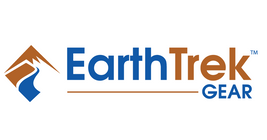Hiking for Active Seniors
Hiking for Active Seniors

What is an active senior?
While being a "senior citizen" has the reputation for being elderly, and unfit for the outdoors, we've found that active seniors destroy that reputation. Hiking among those 65 and up is becoming more common, more popular, and more acceptable.
Fitness, travel, camping, outdoors, world trekking . . . all of these activities are being enjoyed more and more by seniors. They have the time, and life energy to enjoy what they couldn't in their working years.
Even work, is being enjoyed by seniors, as a way to keep busy and make extra side money to do activities they want to do.
We get the joy, of not only helping senior citizens get outdoors, we give them confidence for it. Hiking is not just for Whole Foods health nuts. World travel is not just for the rich.
Product that help make people more active include:
- Ergonomic shoes
- Trekking poles (of course!)
- Sun hats
- Breathable rainwear
- Warmer clothes than the average hiker
Benefits of hiking for senior citizens
And while there is no so-called "fountain of youth", hiking, quite possibly, can be the closest exercise activity to it.
Not only does it help in your cardiovascular health (breathing, blood flow, etc), it is a natural strength-builder, making stronger and thicker bones and muscle.
A recent study found senior citizens can triple their strength after 10 weeks of hike training.
"Walking and moving around is the single most important thing older people can do to extend their life expectancy and remain independent," says Bill Evans, of the University of Arkansas's Institute on Aging, says with his interview with Backpacker Magazine.
Also mentioned in the same article, in the 1990s, the New England Journal of Medicine reported that a group of "very frail" 87-year-olds increased leg strength by 113 percent over 10 weeks with high-intensity strength training every other day. Hiking can be a big part of this.
Strength - ability - life expectancy. All of these can go up, simply with regular hiking, several times a week.
What about bones? Joints? Knees?
![]()
To fight stiffened joints that come from age, ] "Moving a joint loosens it," Lynn Millar, with her interview at Backpacker says. They go on: "On the trail, repeat (home exercise) movements . . ." with rest breaks, of course.
The right equipment; high-ankle shoes built for hiking, and trekking sticks of course, will help with knees and balanced impact.
Also, for people in the older spectrum, consider wearing insoles, as your natural feet pads have worn down through age. Insoles will help greatly.
Prevention magazine found that Walking can reduce your risk of hip fractures by 30%, according to a New England Journal of Medicine study. The added stresses to your bones actually cause your bones to respond by making more bone cells, . . . increasing strength.
How difficult of a trail should I take? How much is too much?

REI recommends for beginner hikers to consider various issues when planning a hike.
You should consider:
- How much time you have
- Your fitness level
- Distance
- Elevation gain
- Time of year and weather
- Logistics
For newly retired seniors, getting back into a regular hiking lifestyle, after decade of work commitments, they should consider a gradual adoption.
A 1-2 hour hike is good for starting, twice a week. Slowly increase the levels of elevation, distance, time, and difficulty, over about a 10-week period.
While normal flat, paved path walking is about 3 mph in speed, factor no more than 2mph for trail hiking, and even less, if it has steep terrain. This will give you a basis for time to take on a trail.
Pick trails that have a reward, like a view, or waterfall, to make it more fulfilling.
But, important, don't do too much, too soon. An all-day hike, greater than 5 miles, is overboard if you're just starting out.
How should I start?
Consider going with friends, or groups, with senior citizens from similar age backgrounds. For example, the Sierra Club has a sub group, Sierra Seniors https://www.sierraclub.org/mother-lode/sierra-seniors/sierra-seniors-hiking-information that is not only similar aged people, but all share a passion for hiking. Going with others will make it rewarding, safe, and develop in after-hike social connections.
However, if your age or body keeps you in a slow pace, you may want to simply start with easy walks, and hike at your own pace, until you feel confident to hike with groups. "Keeping up" may be a challenge for some.
Pick hikes that are labelled "Easy". Later, you can graduate into "Intermediate" and "Advanced" hikes as your body builds its strength. Remember, building up your muscle and bones comes through exposure to exercise stress, leaving hiking as one of the best ways to do that. This truly makes an active senior lifestyle.
- Mike Cutler, hiker, trail blogger,@ EarthTrek Gear
https://www.backpacker.com/skills/fitness-special-mdash-hike-forever-age-65-up
https://www.prevention.com/fitness/a20504878/4-easy-ways-to-strengthen-your-bones-while-you-walk/
https://www.rei.com/learn/expert-advice/hiking-for-beginners.html




1 comment
Im an active avid hiker looking to hike moderate to difficult trails with other active single seniors